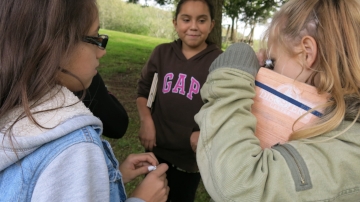

The Hidden Life of Trees
For July 2017, the BRDC Book Club read and discussed The Hidden Life of Trees.
"In The Hidden Life of Trees, Peter Wohlleben shares his deep love of woods and forests and explains the amazing processes of life, death, and regeneration he has observed in the woodland and the amazing scientific processes behind the wonders of which we are blissfully unaware.

Galax Middle School Studies Leaves, Invasive Plants and the American Chestnut
Students from Galax Middle School travel to Matthews State Forest to learn about the forests of the Blue Ridge.

(July 2015) American Chestnut: The Life, Death, and Rebirth of a Perfect Tree, by Susan Freinkel
"The American chestnut was one of America's most common, valued, and beloved trees—a "perfect tree" that ruled the forests from Georgia to Maine. But in the early twentieth century, an exotic plague swept through the chestnut forests with the force of a wildfire. Within forty years, the blight had killed close to four billion trees and left the species teetering on the brink of extinction."

BRDC Discovery prompts study of Virginia Paper Birch
Way back in 2011 one our guides, Devin Floyd, took a group of young explorers up into a very unique habitat on Turk mountain in search of rare species. They were searching in a north facing rock talus for ice age relic species. Low and behold that group found and documented a tree that had characteristics fully matching a Paper Birch, Betula papyrifera. The Paper Birch is a species that isn't usually documented as living south of Pennsylvania.